The Power of Complementary Colors: Enhance Your Color Palette with Dynamic Pairings
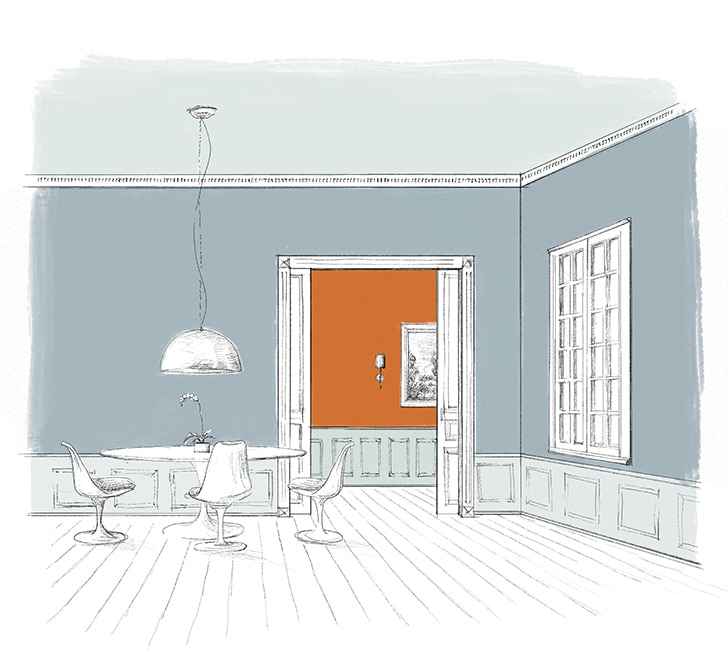
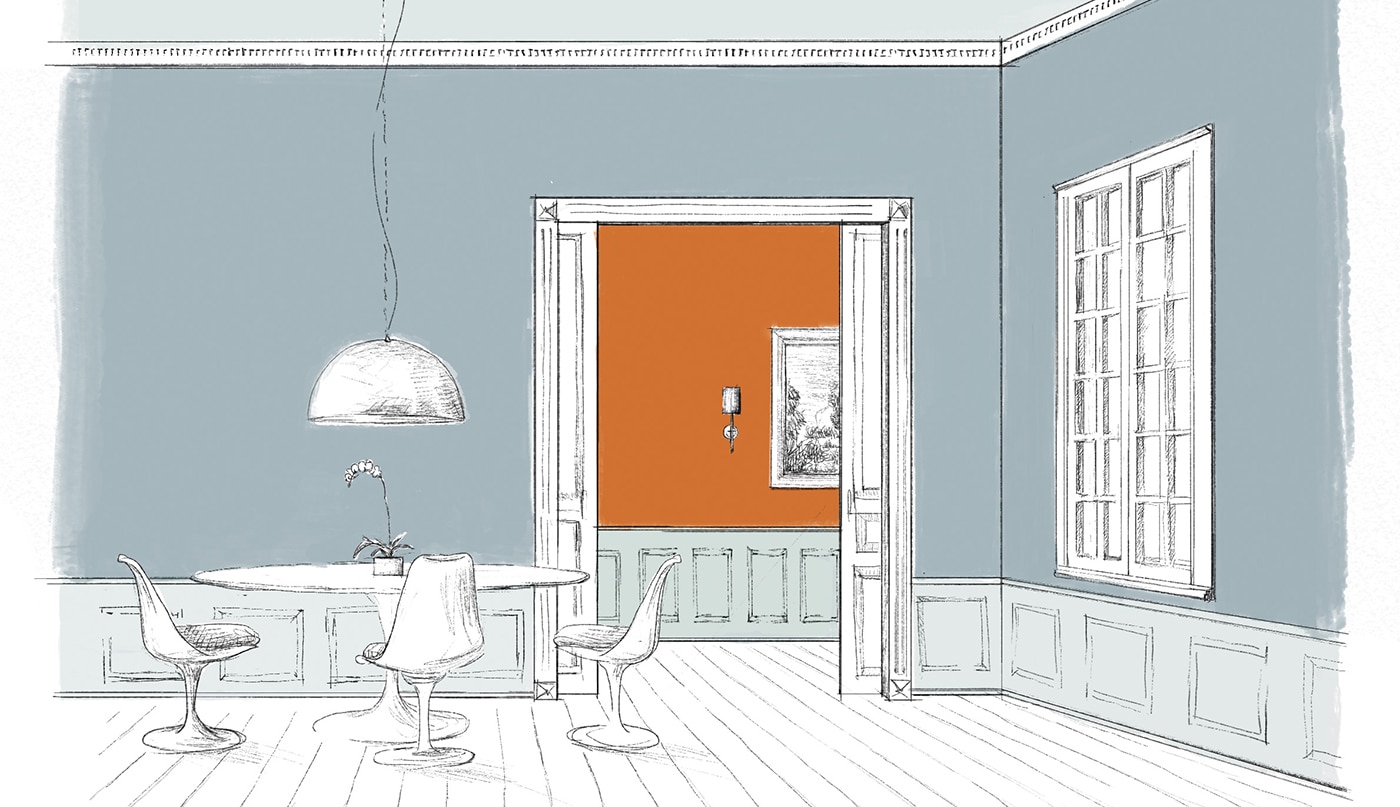
The Power of Complementary Colors: Enhance Your Color Palette with Dynamic Pairings
If you love the energy and drama color brings to any space, a complementary color scheme is the perfect option for you.
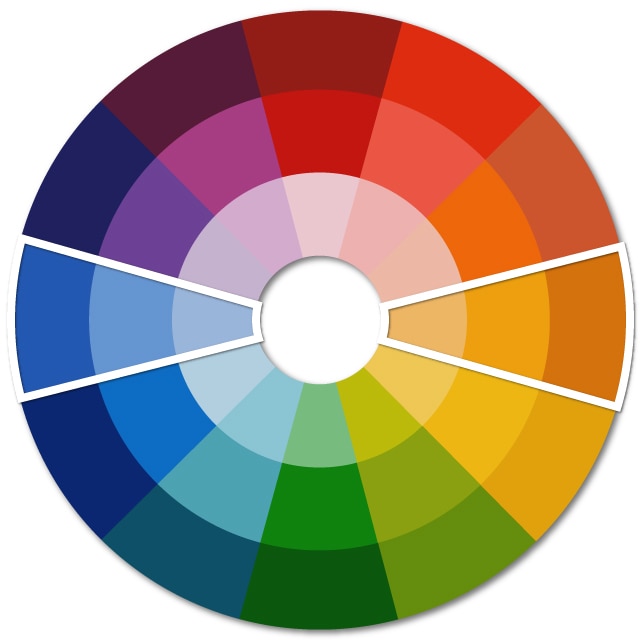
Understanding Complementary Colors
Complementary color schemes consist of two colors that are opposite one another on the color wheel. These color pairings create high contrast, dynamic spaces. Opposite “complementary” colors combine a cool color with a warm one.What are Complementary Colors?
- Red and Green
- Orange and Blue
- Yellow and Purple
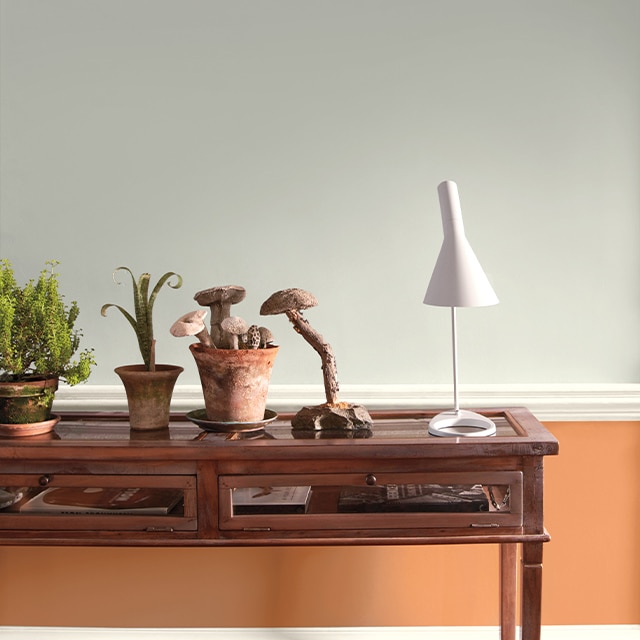
Incorporating Complementary Colors in Interior Design
There are many different tints and shades within every color family. Considering these nuances broadens complementary color scheme options even further!For example, you can pair a deep hunter green like Salamander 2050-10 with a soft rosy peach like Georgia Peach 031. Or consider using a cool, blue-gray more prominently on an upper wall, with a playful pumpkin orange less prominently on the wall’s lower half, as seen here.
Tips for Using Complementary Colors in Room Décor
- Use hard surfaces like tile, brick, marble and flooring to guide color selection. A rich blue on the walls, like cool Kensington Blue 840, for example, will strike a design cord against warm-toned terracotta tile floors.
- Create complementary color schemes by pairing paint colors with hues found in artwork, pillows, rugs, bedding and curtains.
- Go beyond saturated hues: Homeowner favorites like neutrals and grays can also be used in a complementary color scheme. The trick is to decipher the color’s undertones. Compare your chosen hue with others that are similar—holding color chips next to one another should show you the subtle differences and help you to figure out the undertone.
Complimentary vs. Complementary?
As stated above, “complementary” refers to colors that sit opposite each other on the color wheel.
“Complimentary” is related to expressing admiration—which clearly, the just-right complementary color scheme is sure to evoke!
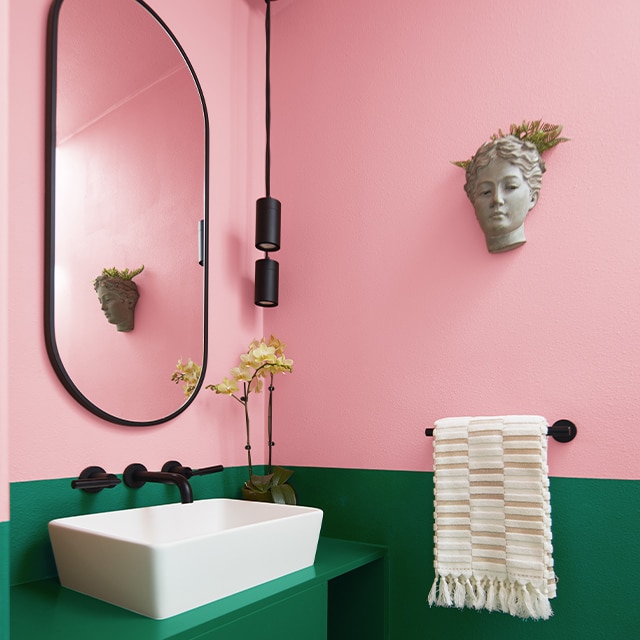
Where Can I Use Complementary Color Schemes?
If you are new to using complementary colors, consider them for smaller rooms like powder rooms, mudrooms, and kids’ rooms. These spaces lend themselves to unexpected, playful pops of color.This bold powder room is a great example: saturated Pink Punch 2006-50 meets sumptuous Rainforest Foliage 2040-10, resulting in an eye-catching design statement.
As always, color choices are personal and depend on the look and feel you want to convey in any room. Find inspiration in our Interior image library.
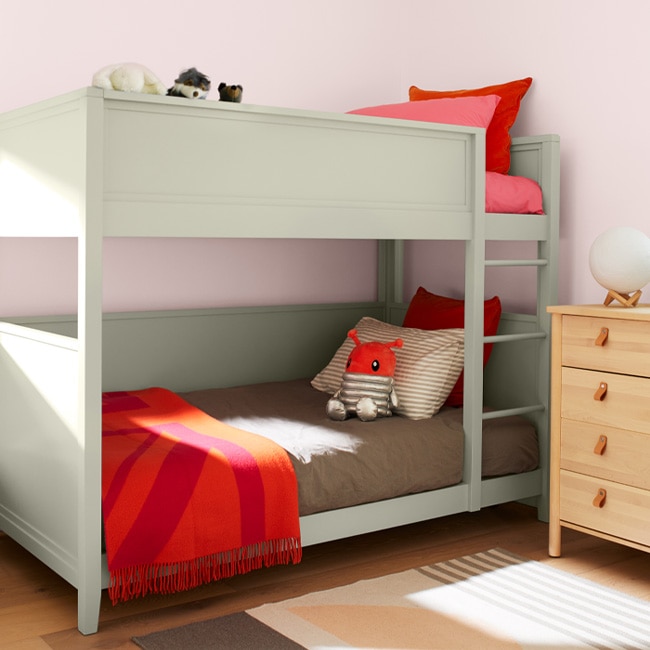
Mistakes to Avoid When Working with Complementary Colors
#1:Using complementary colors 50/50 in the space.
Solution: Take the time to think through proportion and ratio. For example, use one color as the dominant one, sprinkling the other color in as an accent.
#2:
Ignoring the brightness or saturation level of both complementary colors.
Solution:
If one color is bold and vibrant, select a muted version of its complementary color companion to create equilibrium.
#3:
Not observing your complementary color scheme in all lighting conditions (artificial and natural light) before painting.
Solution:
Test paint colors with color samples. While dark Black Raspberry 2072-20 looks dreamy alongside buttery Windham Cream HC-6, seeing them both in your space will help you achieve peace of mind before kicking off your painting project.
Shop Color Samples
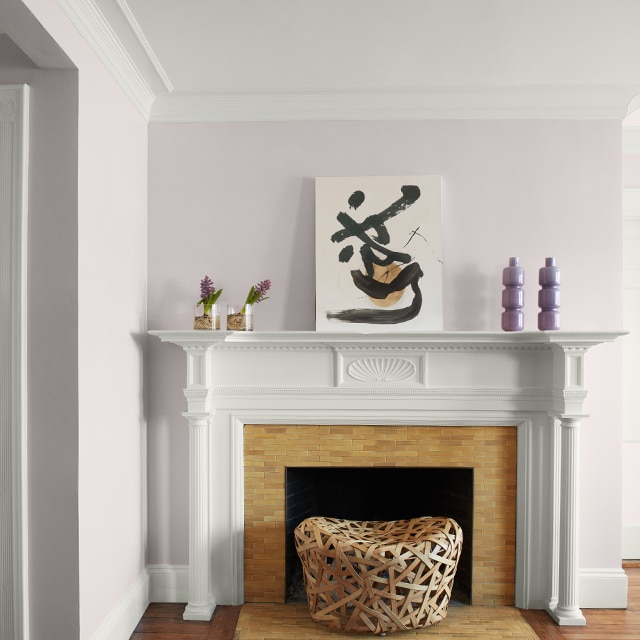
Balancing Colors in Your Home
Use existing hues on tiles and floors in your space as one of your two complementary colors.Here, the soft yellow undertones of the fireplace surround and the woven basket warms up the cool-toned violet walls. The result? An effortless complementary color scheme.
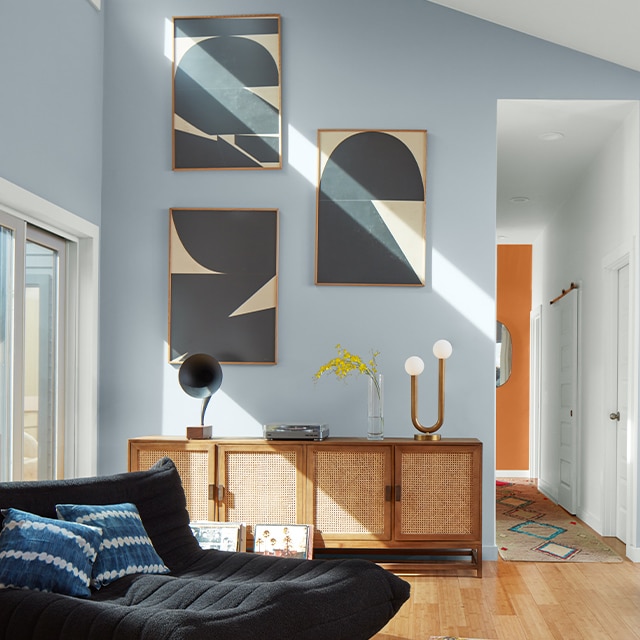
Harmonizing Complementary Colors in Different Rooms
Using complementary color schemes in adjoining rooms creates eye-catching yet cohesive color flow throughout your home.Here, the eye is drawn down the hallway to a bright accent wall in Buttered Yam AF-230, a perfect paint pairing to cool, blue-gray walls in Solitude AF-545.
Love these colors? Check out the Affinity® Color Collection, a curated selection of paint colors designed to mix and match seamlessly.
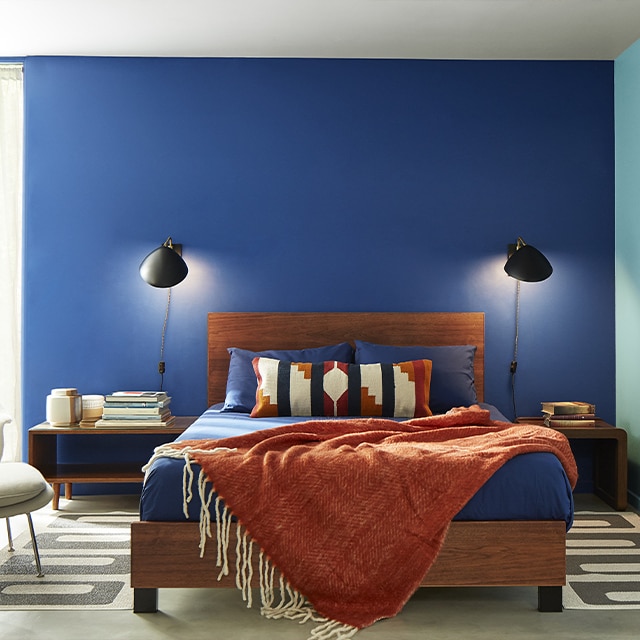
Enhancing Interest with Complementary Hues
After painting your space, use the color wheel to inspire you when shopping for design elements.Here, a rust-colored throw and pillows pop against the Blueberry Hill 812-painted wall and navy bedding. A light blue accent wall in lively Spring Rain 723 adds further dimension to this contemporary bedroom.
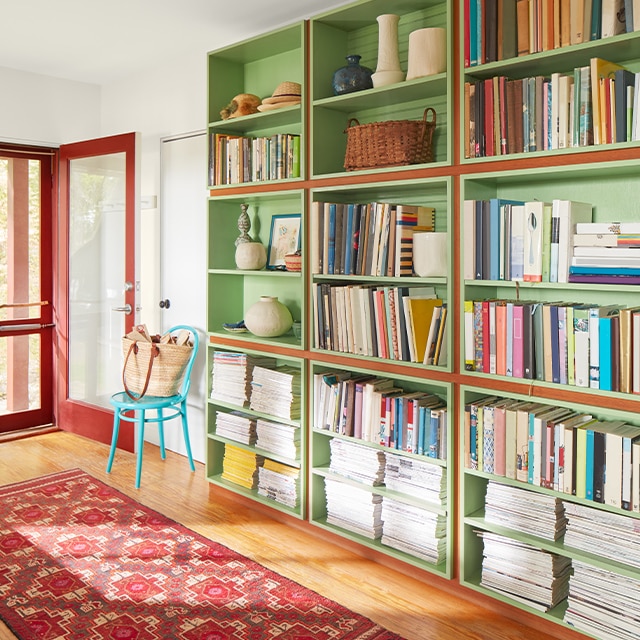
More Winning Examples of Effective Complementary Color Palettes
Green and Red Complementary Color Scheme
Ceilings, doors, furniture, cabinetry—all these surfaces and more are candidates for complementary color combinations.
Here, a bold red front door in Smoldering Red 2007-10 paired with a bookcase in Woodland Hills Green 543, a citrusy green, creates a fresh look.
With countless nuanced shades and tints of red and green, this complementary pairing goes way beyond “holidays only”!
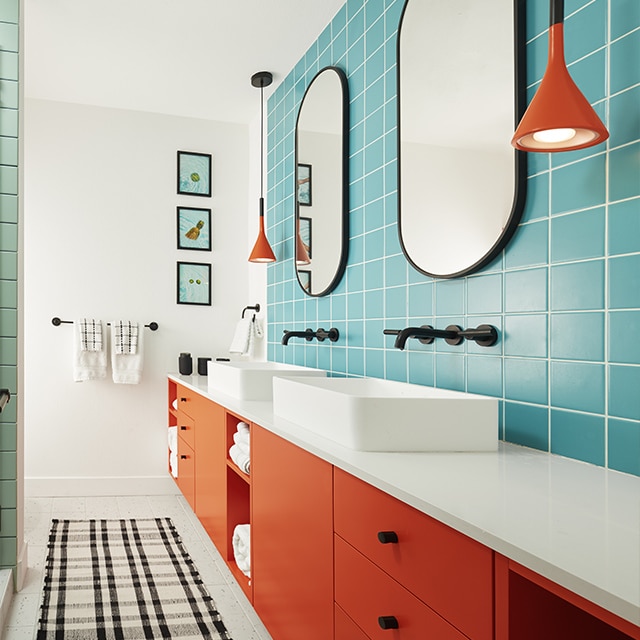
Blue and Orange Complementary Color Scheme
Using saturated colors for your complementary color scheme delivers a lively look.
This bathroom pairs turquoise blue tile walls with cabinetry painted in Fireball Orange 2170-10, transforming this modest bathroom into a vibrant space.
Other saturated complementary colors we love include:
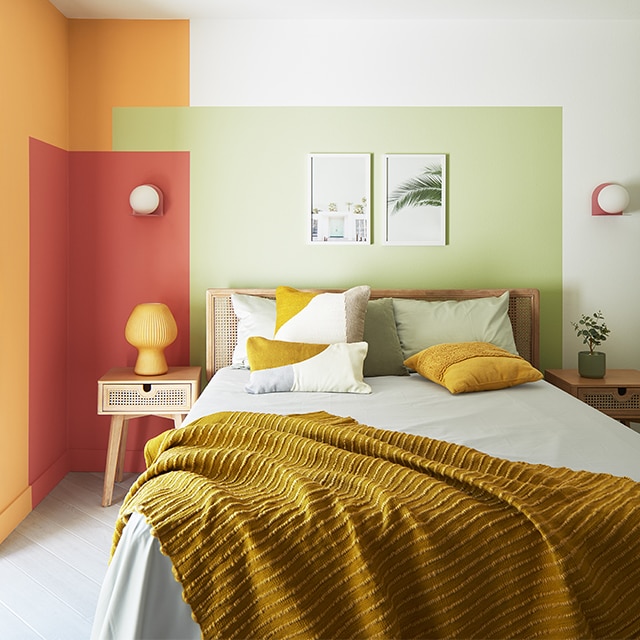
Use Complementary Color Schemes for High Impact Color Blocking
More of a home décor mainstay than trend, color blocking uses two or more solid colors to create interesting, dynamic color combinations. The art of 20th century artist Piet Mondrian is the quintessential example.Color blocking’s signature mix of geometric shapes and patterns makes a striking statement in any room.
Here, soft Glade Green 498 pairs effortlessly with two bold red-orange hues, Golden Gate 033 and Pan for Gold 181.
Frequently Asked Questions
Q. What are complementary colors?
A. Complementary colors are color pairings of hues found opposite of one another on the color wheel.
Complementary color schemes pair warm and cool color wheel hues as follows:
- Red and Green
- Orange and Blue
- Yellow and Purple
A stellar example of “opposites attract,” when used together, complementary color schemes create eye-catching visual contrast since they enhance each other's intensity.
Complementary colors can be bold and saturated or soft and muted.
Q. How do I choose a complementary color scheme for my home?
A. To select complementary colors, start by identifying the main color you are dedicated to using. Then, refer to the color wheel and find the color directly opposite the one you selected to find the complementary color. Here is a quick snapshot of complementary color scheme pairings from the color wheel.
- Red and Green
- Orange and Blue
- Yellow and Purple
Q. How can I use complementary colors in my color scheme without it being overwhelming?
A. There are a few ways to avoid your complementary color scheme overwhelming your space.
- You can use softer, more muted tones of the paired color families.
- When painting, try a bold complementary color scheme for a powder room, mud room, or kids’ room versus a more heavily trafficked space.
- Use complementary color schemes in moderation by matching them to accent colors within artwork, furniture upholstery and other home accessories.
Q. Can I use shades or tints of complementary colors in my color scheme?
A. Using shades or tints of complementary colors creates a more nuanced and balanced color scheme. By adjusting the saturation levels—think pales and pastels or deep jewel tones—of the selected colors, you can achieve a harmonious effect that provides visual contrast.
You can see how a range of complementary color schemes will look in your space by using the photo and video visualizers on the Benjamin Moore Color Portfolio® Mobile app.
Q. Are there any specific complementary color schemes that work well in certain rooms?
A. While color selection is always personal, here are some complementary color schemes we love for specific rooms:
- Kids playroom: Try a cobalt blue like Evening Blue 2066-20 and a cheery orange like Peach Crisp 159 to create a vibrant complementary color scheme.
- Guest room: A soft green like Silken Pine 2144-50 and a rich brick red like Cottage Red HC-184 is both stylish and tranquil.
- Living room: Consider an aubergine purple couch—think Autumn Purple 2073-20 and a buttery soft yellow wall like Ylang Ylang AF-305 for an elegant alternative to neutral.
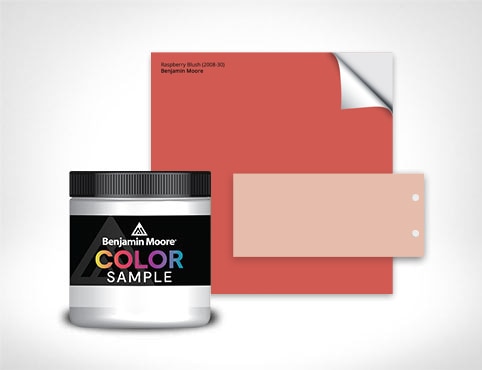
Order Color Samples Online
Try a color before you commit and be sure you get the perfect hue and finish for your space.
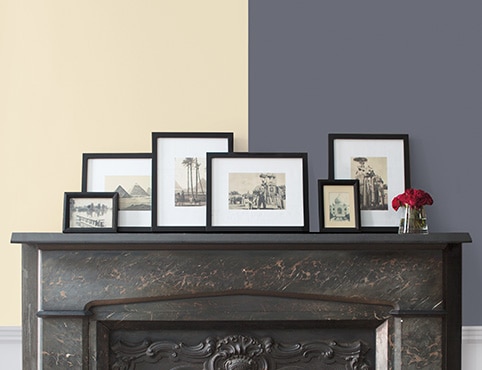
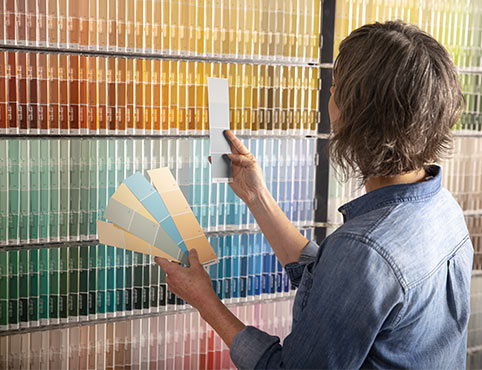
How to Choose Interior Paint Color
Learn from the experts on how to select colors you'll love.
